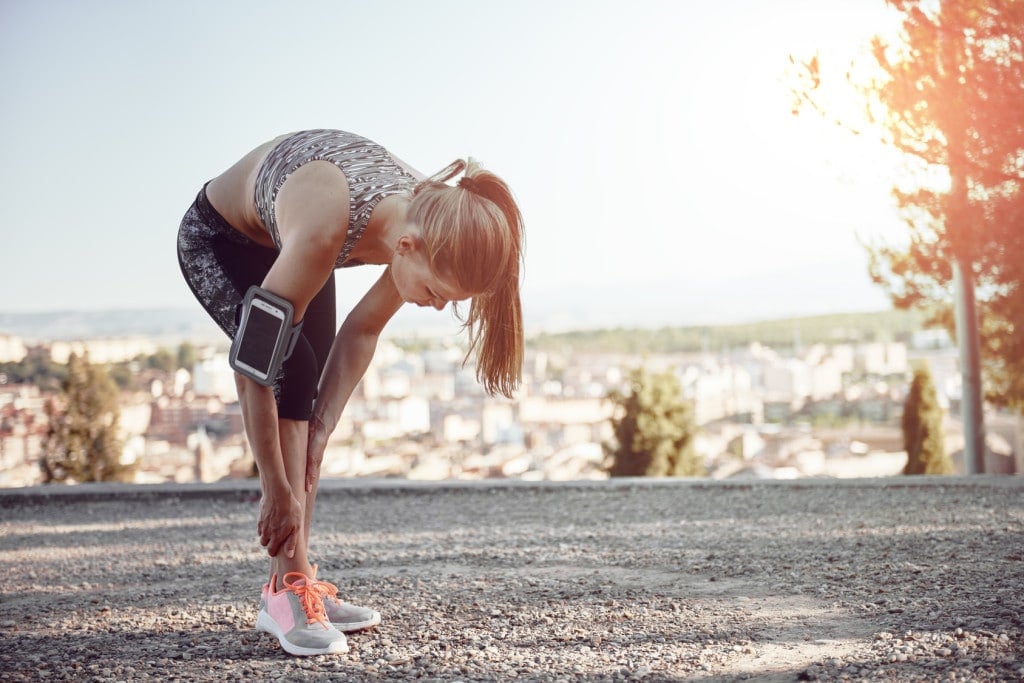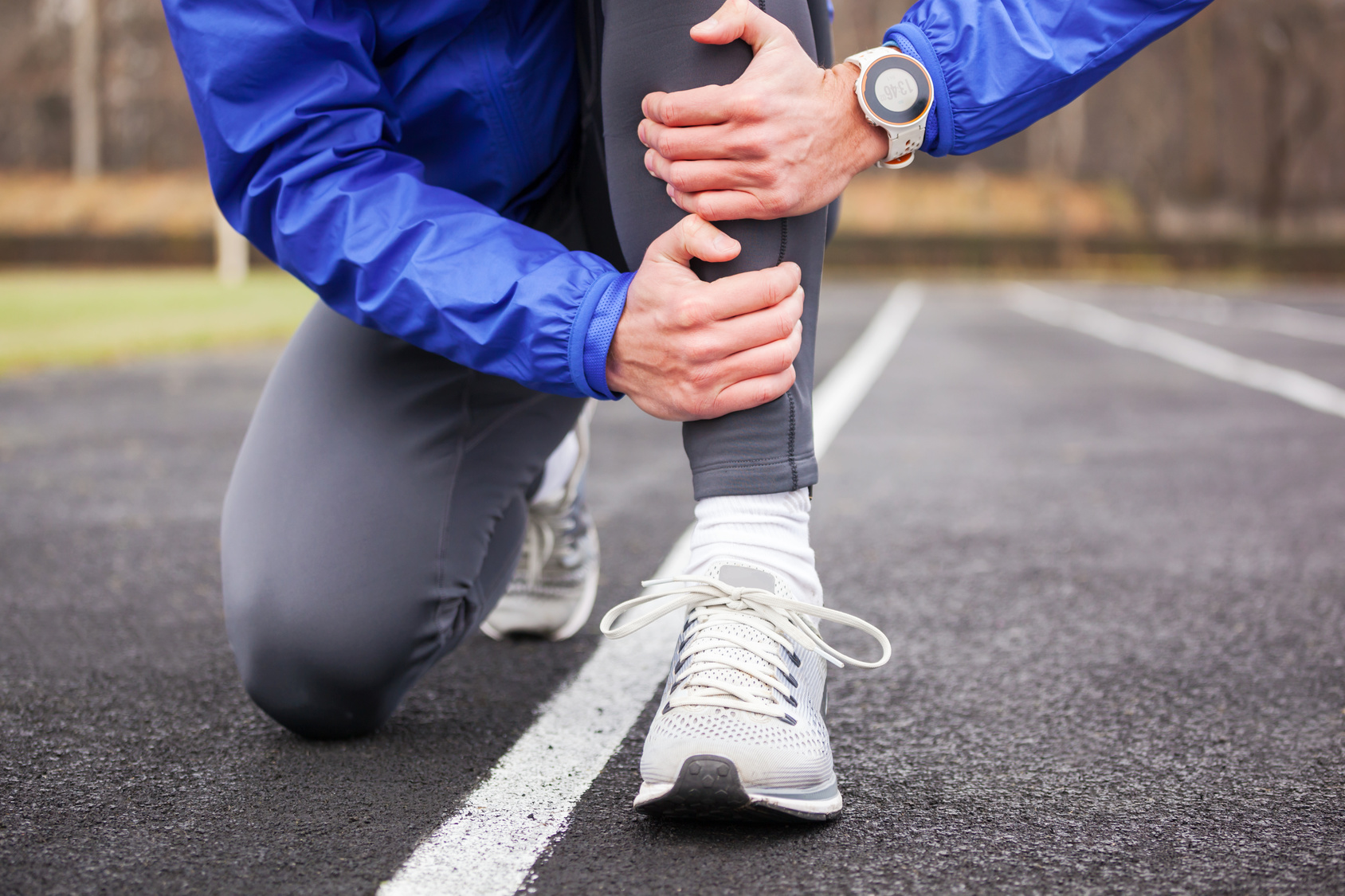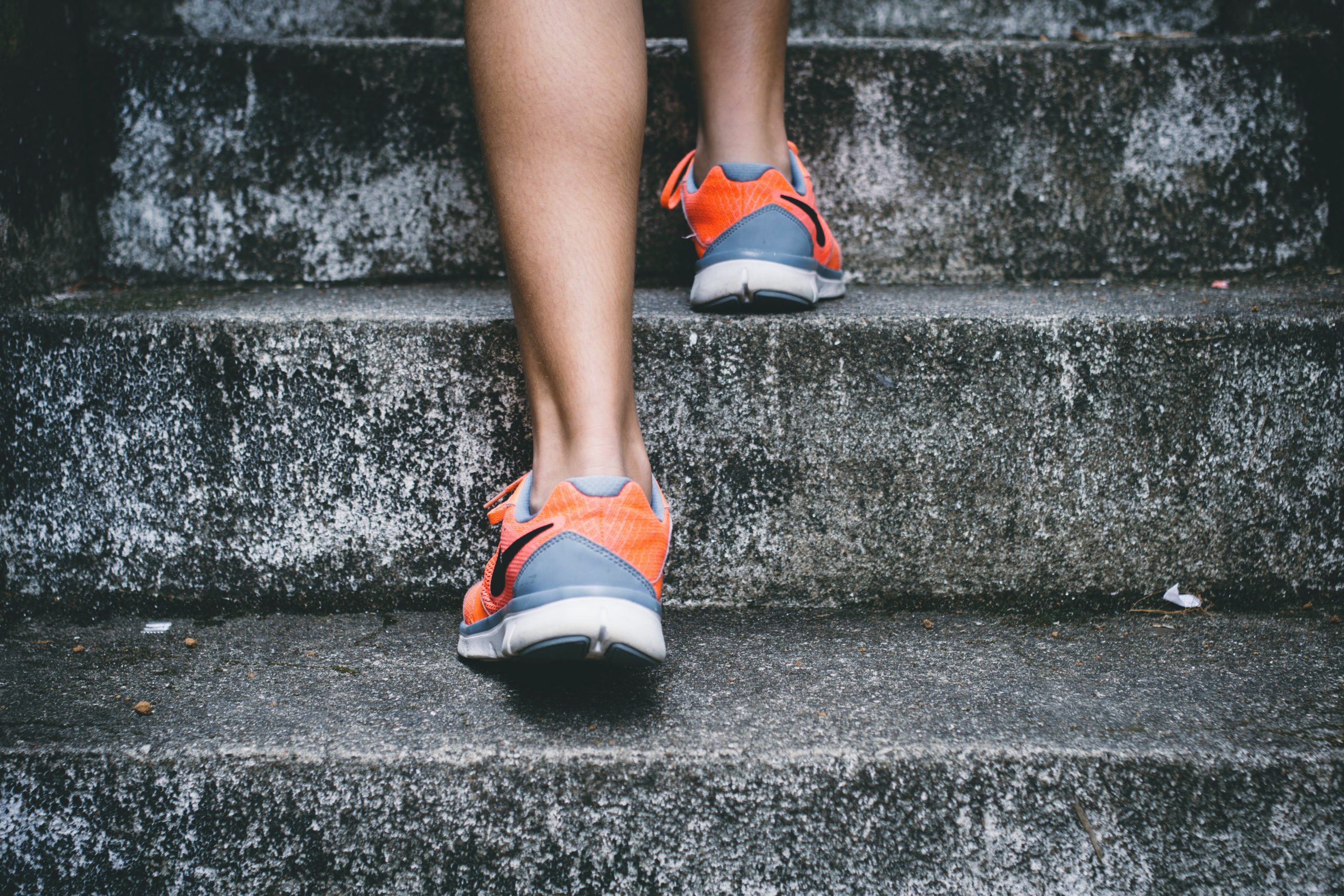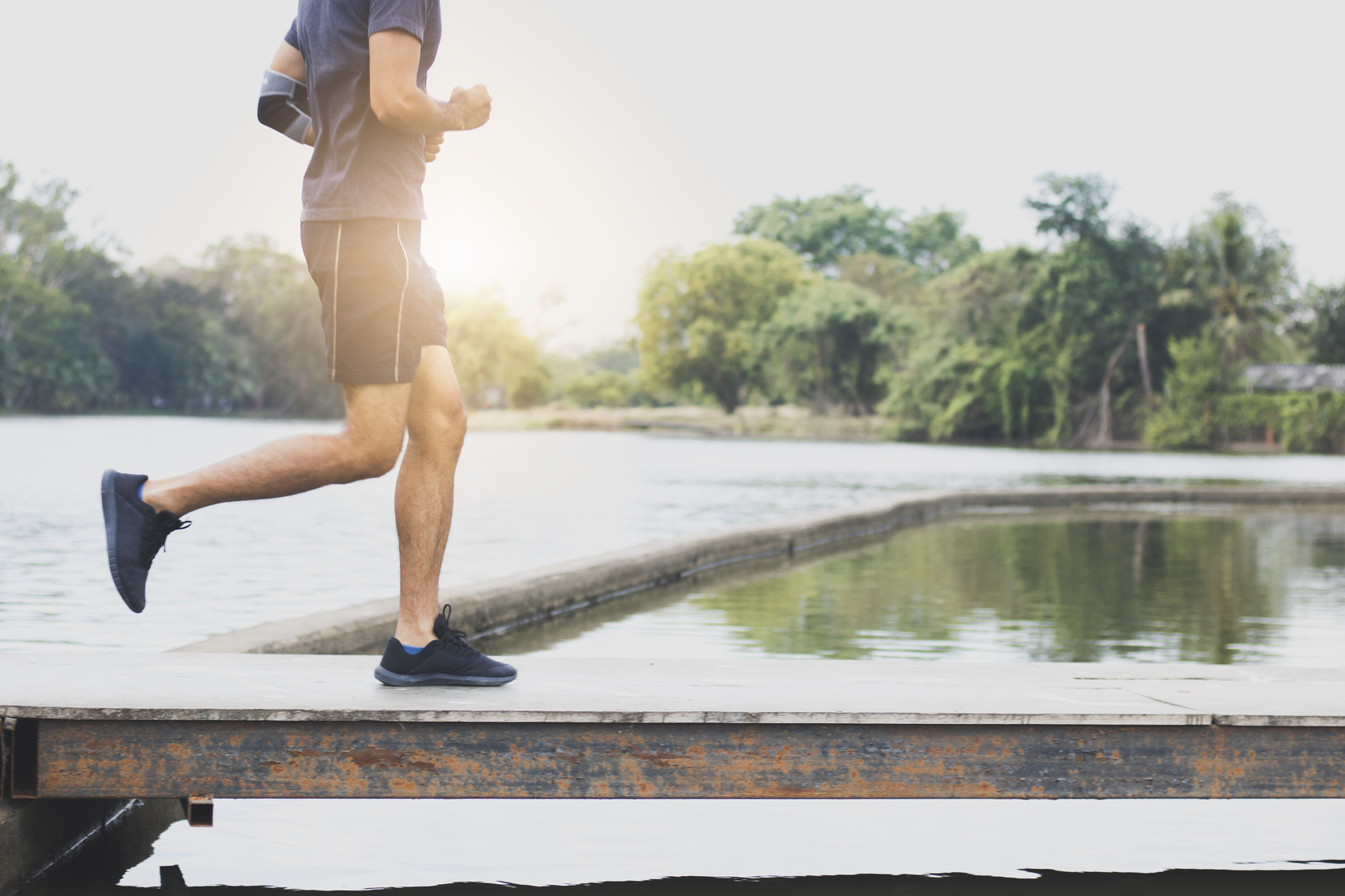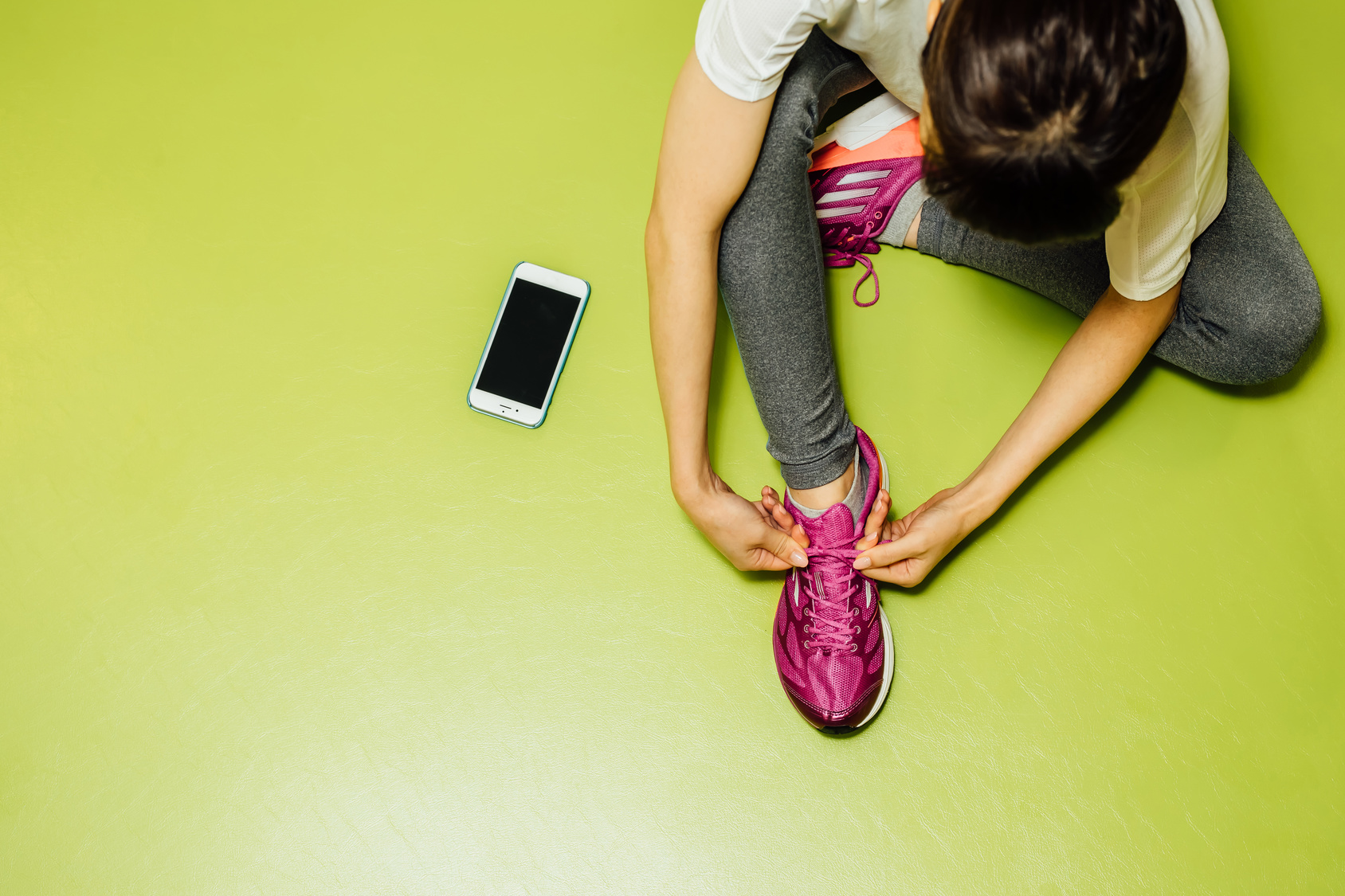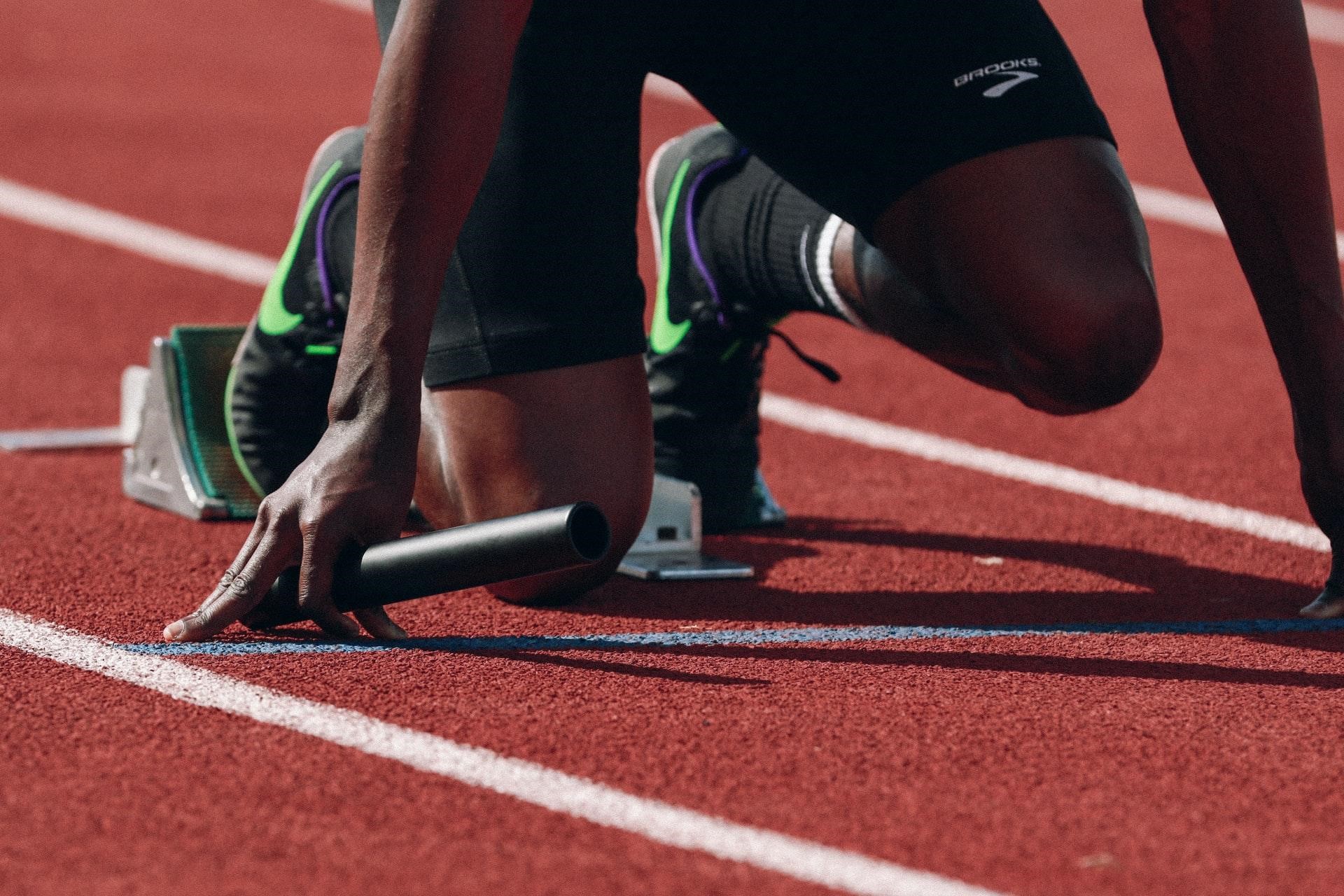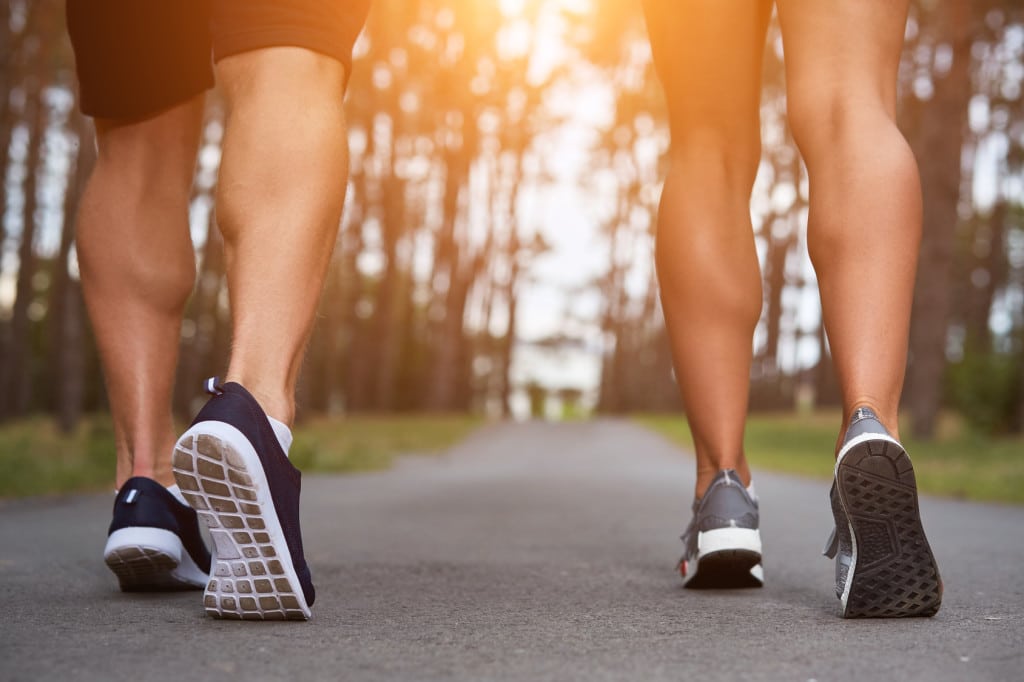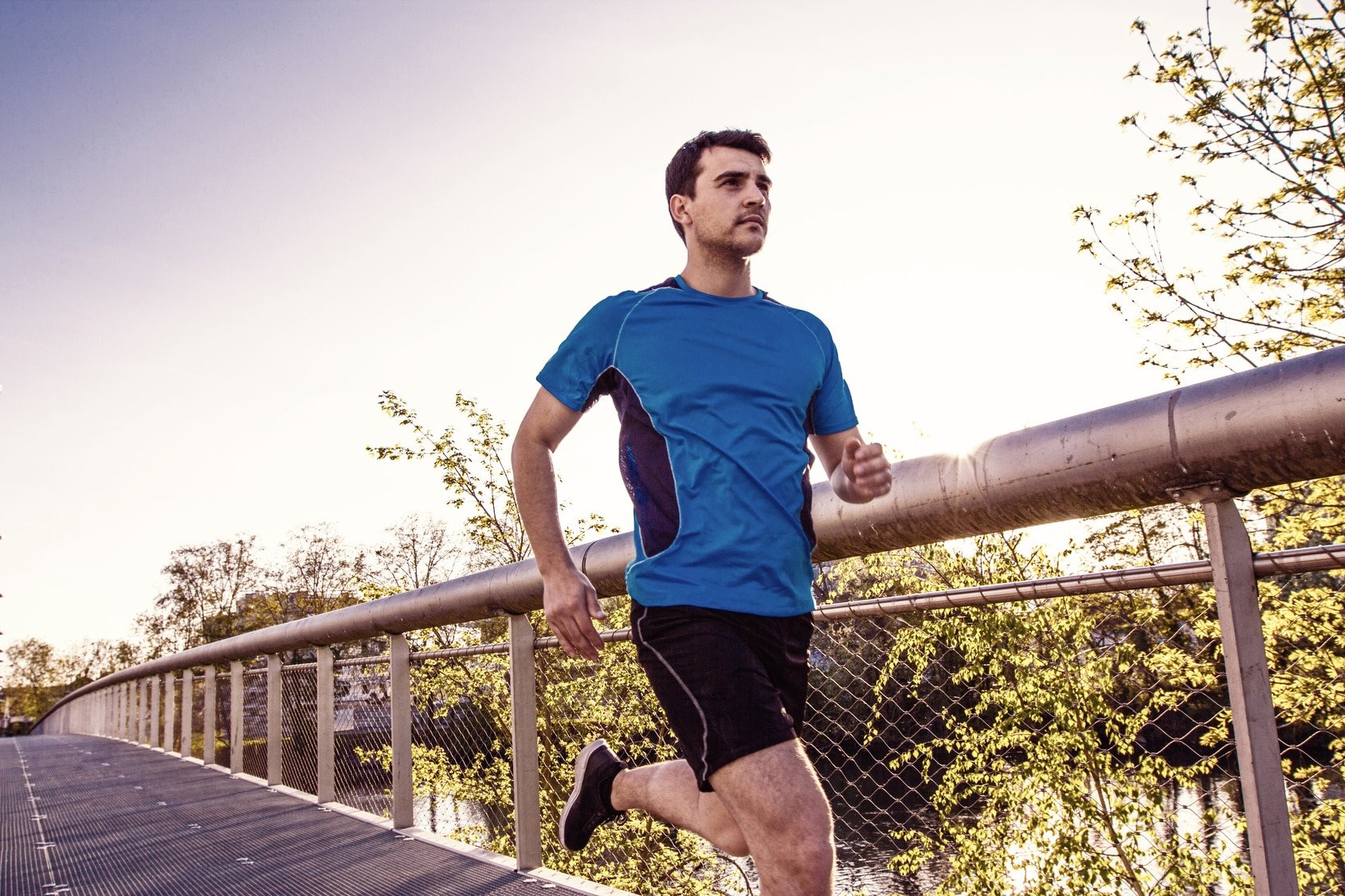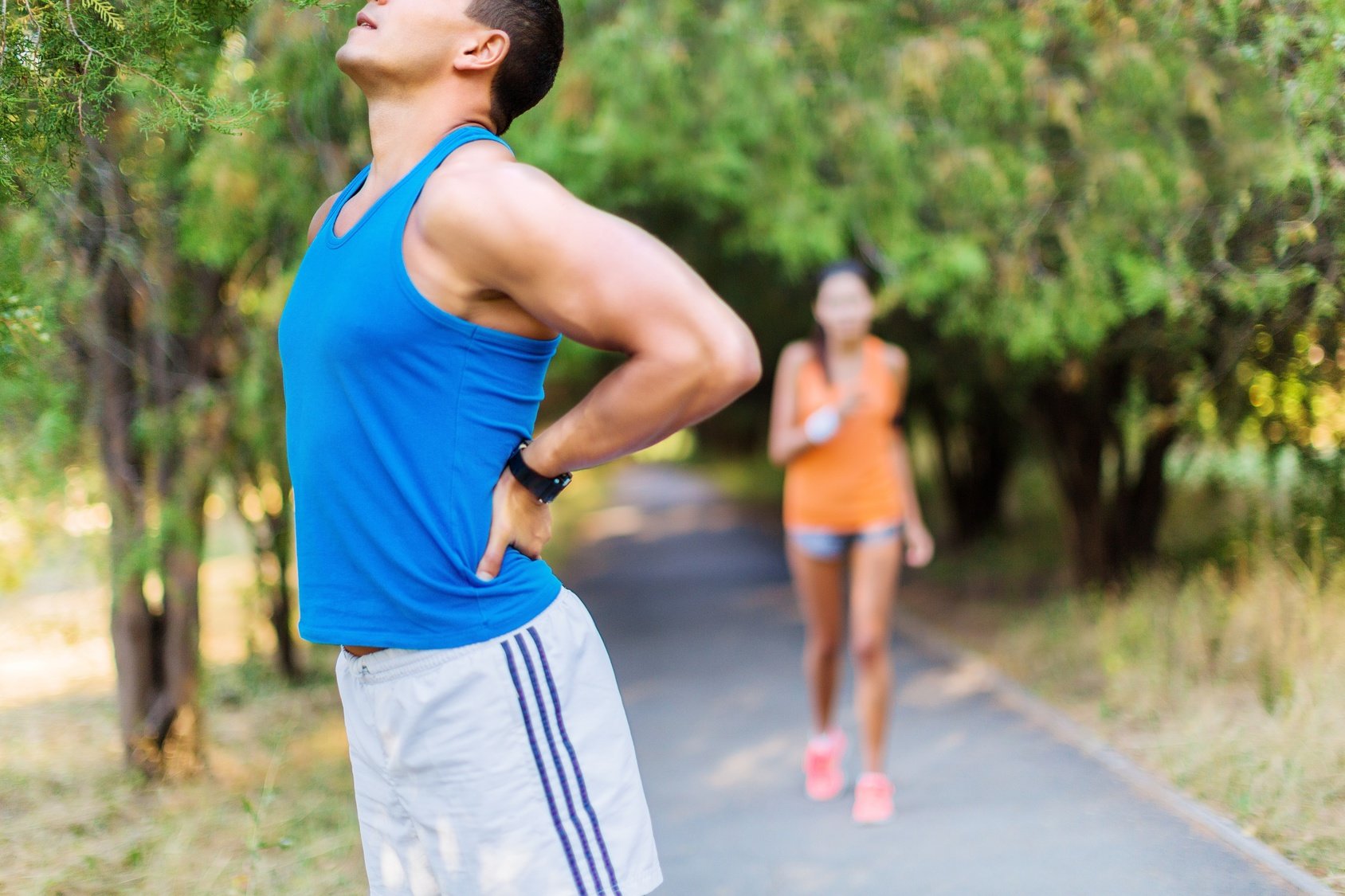Are you on the lookout for effective ways to keep shin splints at bay while running? If so, you’ve come to the right place.
As a runner, I understand all too well the frustration and discomfort of dealing with shin splints, or medial tibial stress syndrome as it’s officially known. It’s a common issue that can throw a wrench in your running plans, regardless of whether you’re a beginner or a seasoned pro.
It’s also almost like a rite of passage for us runners, but honestly, it’s one we’d all happily skip.
But don’t worry, it’s not all doom and gloom!
Here’s the bright side: With some savvy know-how and a proactive game plan, you can totally sidestep (pun intended) shin splints. And guess what? That’s precisely what we’re diving into today!
In today’s article, we’re going all-in on shin splints. I’m talking top-notch, science-backed tactics to help you kick shin splints to the curb for good. We’ll break down the nitty-gritty of why these nuisances crop up in the first place, dish out some top-notch prevention tips, and even throw in some tried-and-true remedies.
Sounds like a good deal?
Let’s get to it then.
What Are Shin Splints?
Shin splints is a common lower-leg ailment that plagues runners.
Let’s say you’re out for a run, feeling the wind in your hair, and suddenly, a sharp pain shoots up your shinbone. That’s the hallmark of shin splints. Sometimes, it’s a mild ache that lingers, and other times, it’s a sharp, throbbing pain that really grabs your attention, especially while logging the miles.
So, what are the tell-tale signs that you’re dealing with shin splints? Let’s break them down:
- Pain Along the Shinbone: The classic symptom. It starts off as a pain along the inner border of the tibia and, if left unattended, can spread out and make a bigger scene.
- Tenderness to Touch: Give your shin a gentle poke. If it feels sore or tender, that’s shin splints ringing the alarm bell.
- Pain Level-Up During Activities: Whether you’re running, jumping, or even just brisk walking, if the pain decides to turn up the volume during these moments, shin splints are likely the culprits.
- The Post-Workout Ouch: Done with your run? Well, shin splints might not be. They often like to linger and remind you of their presence even after you’ve cooled down.
- Swelling Squad: Sometimes, shin splints bring along a friend – mild swelling. It’s their way of saying, “Hey, we’re really here!”
Left untreated, shin splints can lead to more severe issues, such as stress fractures, which require even longer recovery periods. As runners, we depend on the strength and health of our legs to pursue our passion. Understanding shin splints and their implications is the first step toward effective prevention and treatment.
Without further ado, let’s tackle the exact measures you need to take to safeguard your legs from the pesky shin splints.
Start Slow
As a runner, it’s crucial to understand the importance of starting slow. It’s easy to get caught up in the excitement and push too hard, too fast, which can lead to overuse injuries like shin splints. Remember, it’s not just about how fast or how far you can go; it’s about building endurance and strength gradually.
When you increase your training volume or intensity too quickly, you risk sending your lower legs into a state of shock. Instead, adopt a gradual and gentle approach.
Instead of falling headfirst into this classic pitfall, here’s a smarter strategy: take it slow and steady. It’s all about the gradual and gentle approach. If you’re just starting out on your fitness journey, consider the trusty walk/run method.
That means dedicating 20 to 30 minutes to alternate between jogging and walking every other day. If you’re looking for the full playbook on this technique, I’ve got a detailed post that’ll guide you through every step – just click right here.
Next, increase your weekly mileage by no more than 10%. This conservative approach ensures your body adapts to the stress of running without being overwhelmed.
Building Shin Resilience: The Role of Strength Training
Strength training is key for not only boosting overall power but also preventing injury. Shin splints are no exception.
So, what’s the secret sauce? It’s all about working on your feet, ankles, calves, and hips – the trusty support squad for your shins. Strength training plays a vital role in preventing shin splints by enhancing the resilience of the muscles surrounding your shins. A stronger lower leg can better absorb shock and stress, reducing the burden on your shins during running.
Ready to get started? You can easily weave these exercises into your warm-up routine or treat them as a stand-alone shin splint workout. Shoot for 12 to 15 repetitions of each exercise, and shoot for two to three sets to truly power up those legs.
Incorporate these strength exercises into your routine to help prevent shin splints:
- Calf Raises
- Stand with your feet hip-width apart.
- Rise up onto your toes, lifting your heels as high as possible.
- Lower your heels back down, then repeat.
- Perform 3 sets of 15-20 repetitions.
- Toe Taps:
- Sit on a chair with your feet flat on the floor.
- Lift your toes upward while keeping your heels on the ground.
- Lower your toes back down.
- Perform 3 sets of 15-20 repetitions.
- Ankle Alphabet:
- Sit or lie down with your legs extended.
- Pretend your big toe is a pen, and write the alphabet with your ankle.
- Perform this exercise for both ankles.
- Aim for 2-3 rounds of the full alphabet for each ankle.
- Resistance Band Exercises:
- Use a resistance band to perform exercises like dorsiflexion and plantarflexion.
- For dorsiflexion, anchor the band around a sturdy object and hook it around your toes. Pull your toes toward your shin against the resistance.
- For plantarflexion, anchor the band to your ankle and point your toes downward against the resistance.
- Perform 3 sets of 15-20 repetitions for each exercise.
Stretching For Preventing Shin Splints
While there’s some debate about the role of stretching in injury prevention, I’ve found that it certainly helps in managing shin pain.
Stretching your posterior leg muscles and the muscles around your shin bone is like giving them a dose of tender loving care.
Essential stretches include the standing shin stretch, the anterior shin muscle stretch, the toe alphabet, and the calf stretch. They help maintain flexibility and can be crucial in keeping shin splints at bay.
Let’s break them down.
Standing Shin Stretch
This stretch focuses on the muscles in the front of your shin. Start by standing up straight. Lift one foot off the ground and bend your knee, bringing your heel towards your buttocks.
Grab your ankle with your hand and gently pull to increase the stretch. You should feel a gentle pull along the front of your shin. Hold the stretch for about 15-30 seconds, then switch legs.
The anterior Shin Muscle Stretch
This stretch targets the muscles at the front of your lower leg. Sit with your legs stretched out in front of you.
Point your toes and then flex them back towards your shin. You can intensify the stretch by gently pushing down on your toes when they are flexed back.
The Toe Alphabet Stretch
This is a fun and effective way to mobilize your ankle and stretch the muscles in your lower leg. While sitting, extend one leg in front of you.
Then, using your big toe as a ‘pen,’ pretend to write each letter of the alphabet in the air.
The Calf Stretch
Essential for runners, this stretch targets the calf muscles. Stand facing a wall with your hands placed on the wall at eye level.
Place one foot behind you, keeping it flat on the ground. Bend the knee of your front leg and push your hips forward, keeping your back leg straight.
You should feel a deep stretch in the calf of your back leg. Hold this position for about 30 seconds, and then switch legs.
Fix Your Form
Running form is pivotal in preventing shin splints. Incorrect form, such as heel striking and overstriding, can lead to increased stress on the lower legs.
First and foremost, let’s kick heel striking to the curb. Landing with your heels first when you run is a no-no. Why? That heel strike can send shockwaves through your legs, increasing the risk of shin splints and other running-related woes.
Want to see the difference? Check out this YouTube tutorial on the magic of midfoot running.
Now, let’s talk stride length. If you’ve had your fair share of shin splints, consider taking it easy on the length of your stride – maybe shorten it by about 10 percent.
Research shows that this small tweak can reduce the risk of tibial stress injury by a pretty solid margin. The reason? Shortening your stride means softer landings, which equals less impact – music to your shins’ ears.
What’s more?
Cadence also matters. To find your it, count how many times your foot strikes the ground on one side in a minute, then double it up. A sweet spot to aim for is around 170 to 180 strikes per minute.
Run on Softer Surfaces
Have you ever wondered why so many seasoned runners swear by softer surfaces like grass, dirt trails, or even synthetic tracks? Well, the secret is out: running on softer surfaces can be a game-changer in preventing overuse injuries—the dreaded shin splints is no exception.
This should come as no surprise, but logging the miles on hard surfaces, such as concrete and pavement, amplifies the impact on your legs, increasing the risk of shin splints. It’s like repeatedly hitting a metal rod on a hard surface – eventually, it’s going to show wear and tear.
On the other hand, softer grounds act as natural shock absorbers, offering a gentler running experience. However, it’s important to occasionally run on harder surfaces, especially if your race or regular route includes them.
And yes, don’t take my word for it. A study published in the “Journal of Science and Medicine in Sport” found that running on softer surfaces significantly reduces the impact on your legs, which, in turn, can lower the risk of shin splints.
Now, before you ditch the pavement entirely, remember balance is key. While softer surfaces are great, it’s still beneficial to mix in some road running, especially if your race day includes hard surfaces. Think of it as cross-training for your legs.
Choose Your Shoes
When it comes to running, the right footwear isn’t just about style or speed—it’s crucial for preventing injuries, particularly shin splints. Shoes with adequate cushioning and arch support can make a world of difference. Here’s how to make sure you’re choosing the right running footwear.
- Know Your Foot Type: Are you flat-footed, or do you have a high arch? Your foot type influences the kind of support you need. Specialty running stores often offer gait analysis to help you understand your foot type.
- Where you are running: The surface you run on matters. Road runners might need different cushioning compared to trail runners. Make sure your shoes match your environment.
- Prioritize Fit and Comfort: A shoe that’s too tight, too loose, or simply uncomfortable can lead to issues beyond shin splints. Your running shoes should feel comfortable from the start, with enough room to wiggle your toes but snug enough to prevent excessive movement.
- Seek Professional Advice: Don’t hesitate to consult with a podiatrist or a professional at a specialty running store. They can provide valuable insights tailored to your specific needs.
For more guidelines on how to choose proper shoes, check the following posts :
- Post 1
- Post 2
- Post 3
- Post 4
- Post 5
Try Compression Socks
Let’s talk about a little secret weapon in the fight against shin splints: compression gear. Now, there’s some research that suggests these tight-fitting wonders can do wonders for your shins.
First off, they might just be the inflammation and swelling whisperers. And here’s the kicker: they’ve also been known to reduce muscle damage and speed up your recovery after a hardcore workout.
Now, I won’t sugarcoat it. There’s no solid proof that compression socks are the ultimate shin splint warriors. But hey, they’re worth considering, especially if you’re willing to shell out 50 to 70 bucks for a pair.
And speaking of that blood flow boost, research says you should aim for around 20 to 24 mmHg of compression at the ankle. So, look for that magic number on the label.
Foam Roll or Massage
Foam rolling acts like a self-massage, targeting adhesions in your muscles and connective tissue. It helps reduce muscle tension, improves blood flow, and enhances mobility, contributing to faster recovery and lower injury risk.
Now, here’s the scoop on the pain. Yeah, it might hurt a bit when you first start rolling. But guess what? That’s a sign that you’re hitting the right spots.
Here’s your foam rolling prescription: roll your shins and calves for about 30 to 60 seconds, then take an equal breather. Do this dance four to five times, at least five times a week
Check out this YouTube tutorial:
Try Acupuncture
Acupuncture, a technique from traditional Chinese medicine, involves inserting fine needles into specific points in the body. It has been suggested to help manage shin splints, releasing substances that alleviate pain and promote healing.
Again, don’t take my word for it. Research in the Journal of Chinese Medicine spilled the beans on this. They discovered that acupuncture could work like a charm, especially in the early stages of shin splints.
In fact, it outperformed physiotherapy and anti-inflammatories in the shin splint showdown.
Seek out Professional Help
If shin splints persist despite all efforts, it’s wise to consult a professional.
It’s not uncommon that the root of the problem goes a bit deeper. Maybe it’s biomechanics playing tricks on you, like muscle imbalances, overstriding tendencies, or postural woes. These aren’t the sort of puzzles you can solve on your own, especially if you’re not sure where to begin.
A podiatrist or physical therapist can offer specialized advice and treatment, addressing any underlying issues that may be contributing to the problem. They can help tailor a recovery and prevention plan specific to your needs, ensuring a safe and healthy running experience.
You can also dabble in some high-tech solutions, like electrotherapy methods – things like electronic muscle stimulation, therapeutic ultrasound, or microcurrent.
And hey, here’s another idea: try taping up that sore limb with some medical-grade tape.
Research shows it can help reduce swelling, boost your range of motion, and give your lower leg muscles some much-needed support.

